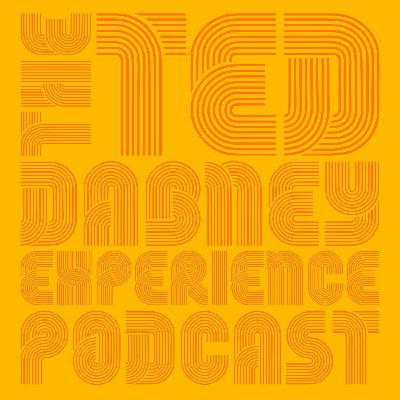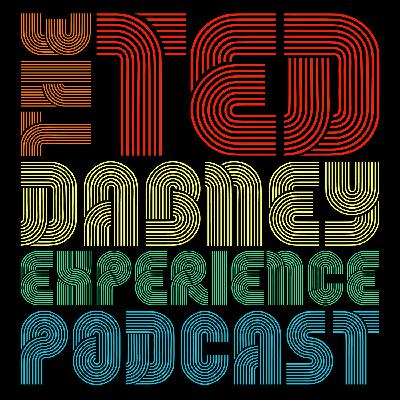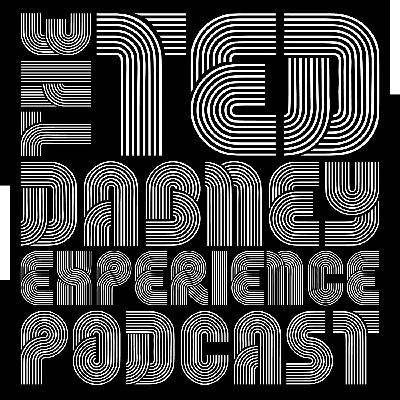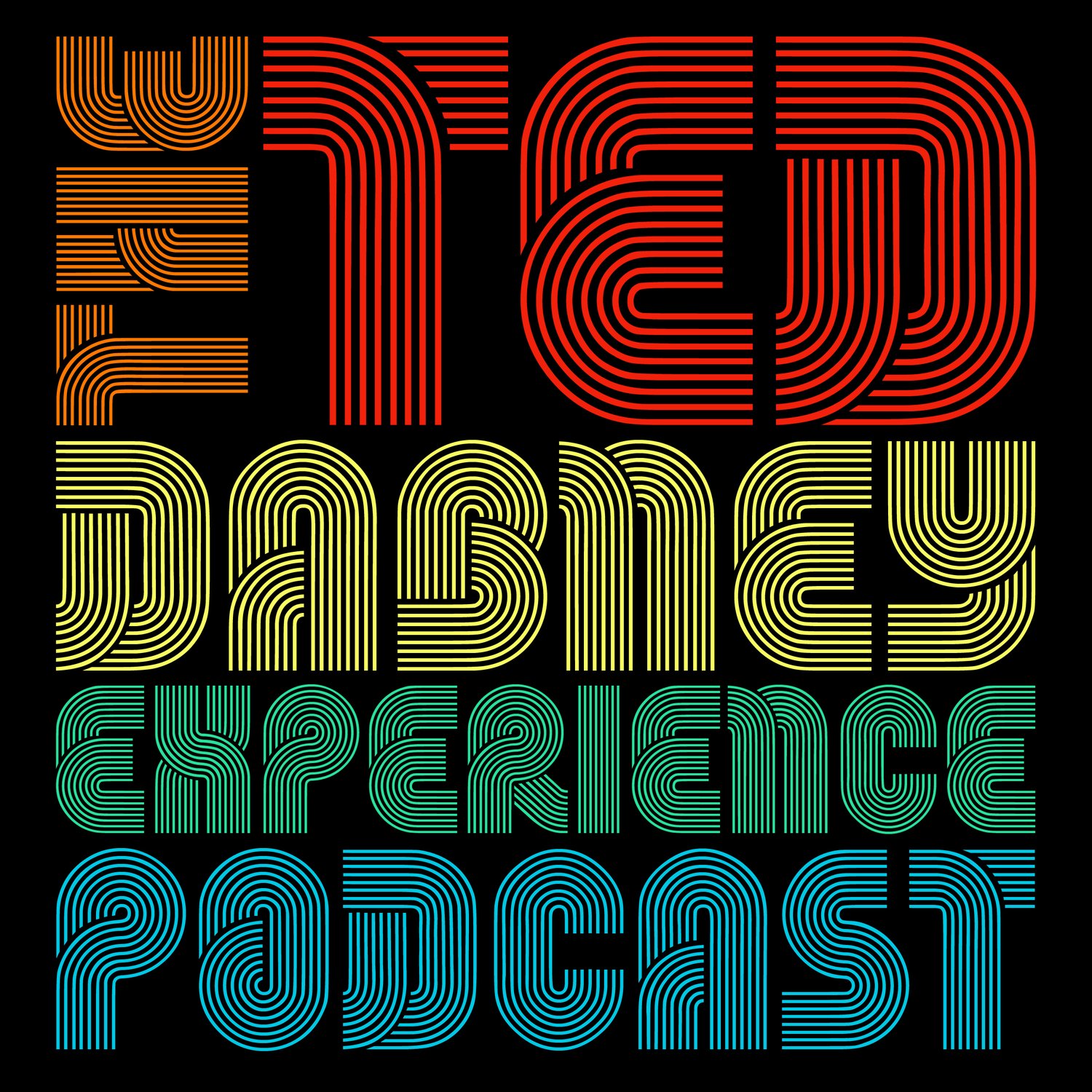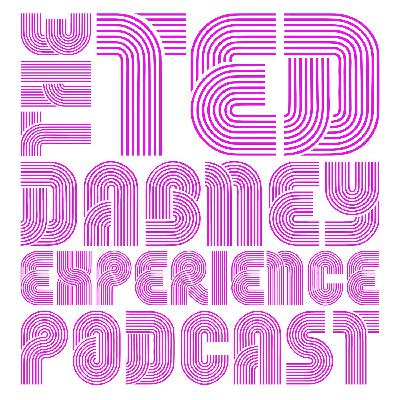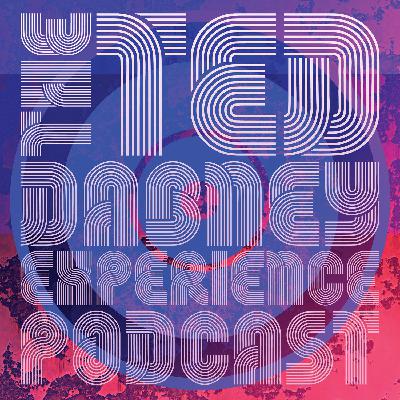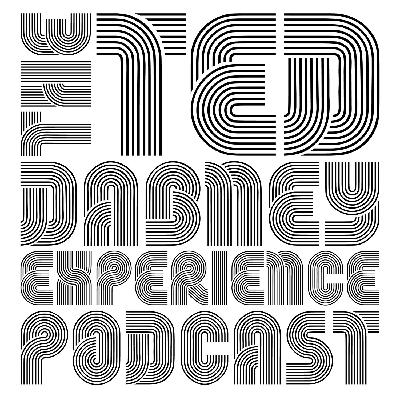Discover The Ted Dabney Experience
The Ted Dabney Experience

The Ted Dabney Experience
Author: The Ted Dabney Experience
Subscribed: 71Played: 1,323Subscribe
Share
© 2021 The Ted Dabney Experience
Description
The Ted Dabney Experience. Intimate conversations with leading lights from the golden age of video arcade gaming. A podcast project by Richard May, Paul Drury (Retro Gamer magazine) and Tony Temple (author of Missile Commander). Brought to you in association with The American Classic Arcade Museum (US) and Arcade Archive (UK).
48 Episodes
Reverse
Despite lacking any knowledge whatsoever of the amusement industry, Kellogg’s sales manager Alistair Crooks and eccentric former RAF airman Phil Smith convinced a young Nolan Bushnell that they were the right men to introduce Atari’s Pong to the United Kingdom in 1973. Swiftly moving from importing to manufacturing, the company arguably grew too fast and was ill positioned to weather the perfect storm of the OPEC Oil Crisis and the Three Day Week, ultimately lasting only fourteen months. This is a nuts-and-bolts yet captivating tale of what might have been, recounted with modesty and good humour.
Doug Macrae founded General Computer Corporation in 1981 with Kevin Curran whilst still an MIT student and would go on to employ many other MIT students, including previous guests Steve Golson and Jonathan Hurd. We talk with Macrae at length about the disruptive business model and general chutzpah of the fledgling company, and what can only be described as GCC playing high-stakes chess with the biggest videogame company in town, Atari Inc. They went on not only to make such inventive arcade titles as Food Fight and Quantum for Atari, but also created one of the most successful coin-ops of all time for Bally Midway, Ms. Pac-Man.
John Ray joined Atari Inc in 1977 as a hardware engineer, learning the ropes with 1978’s Fire-Truck, arguably the first truly co-op arcade game and a distinctive arcade presence due in no small part to his analogue circuitry audio. Ray was also involved with the Atari-licensed versions of Namco’s Dig Dug and Xevious, the awesome arcade version of Tetris and — into the 1990s — the hugely popular San Francisco Rush racing series.
The Ted Dabney Experience is a podcast project by Richard May, Paul Drury (Retro Gamer magazine) and Tony Temple (author of Missile Commander - A Journey to The Top of an Arcade Classic). We host in-depth conversations with the creative leading lights and supporting cast from the Golden Age of coin-op Video Arcade gaming.
Rob Quinn joined Stern just as the company was branching out from it's core pinball business to explore the brave new world of videogames. Rob talks about his involvement with the company's early hit, Berzerk, his experiments with laser disc technology and his personal misgivings about how the company was managed.
Mark Pierce was a game designer at Atari and Bally Midway. We talk to him about the protracted development of Escape From The Planet of The Robot Monsters, the axonometric, somewhat baroque B-movie arcade adventure, and the conversely swift creation of the tile-stacking puzzler classic, KLAX. Pierce also shares some amusing anecdotes about scouting for muscular male models for the visually ground-breaking arcade beat-em-up, Pit Fighter, and provides us with a unique insight into why Atari faltered and ultimately folded in The Noughties.
From 1975 to present day, Jack Guarnieri has seen and done it all; from servicing mechanical pinball machines in the dive bars and laundrettes of Seventies New York, bearing first-hand witness to the inflation - and rapid deflation - of the video game bubble of popular lore, running his own operator route during the ‘80s and then to selling video and pinball machines directly to consumers. All of this led him to found one of the most innovative pinball manufacturers, Jersey Jack.
Jeremy Saucier is Assistant VP at The Strong Museum of Play in Rochester, New York.Jeremy talks to us about the history and evolution of the Strong Museum and its pedagogical remit - from American history and Industrialisation to a focus on play - and gives us a fascinating insight into the day-to-day management of a museum. With a doctoral degree in history and a degree in American Studies, Jeremy was a natural fit for his role at The Strong, with its extensive archive of original material, from concept art and design documents to internal company memos from Video Arcade stalwarts such as Williams, Bally and most notably Atari.
Jeff Bell was a hardware engineer in Atari Inc’s coin-op division and officially the longest serving employee of the company; literally the last person to switch off the lights in 2004. Jeff walks us through his formative years learning the basics of electronics at his father’s desk, the brotherhood of Atari Inc, suspected mob involvement in the early videogames industry and Nolan Bushnell’s Bermuda shorts.
For this episode we speak with none other than Allan Alcorn, Atari employee number three after Nolan Bushnell and Ted Dabney, and the engineer of Pong, one of the very first video arcade games.
Senior corporate executive, serial entrepreneur, automotive designer and fine artist. Roger Hector is not only a successful businessman but a bona fide creative polymath. A long time ago, Roger sharpened his pencils at Atari Inc, working alongside co-founder Nolan Bushnell and creative director George Opperman on a vast range of videogame projects. Hector became R&D manager at Atari, before leaving to co-found his own games company, Videa, with Howard Delman and Ed Rotberg, programmer of Atari’s Battlezone.
Part 2: Eugene Jarvis cut his teeth in the Atari pinball division before going on to produce the groundbreaking Defender for Williams Electronics. Also for Williams (contracted as Vid Kids, his new company with Defender co-creator Larry DeMar) was Stargate, Robotron: 2084 and Blaster. Jarvis left Vid Kids in 1984 to attend Stanford University where he gained an MBA in 1986. He then returned to Williams to design the OTT run and gun title Narc (programmed with George Petro) and, with Mark Turmell, Robotron’s spiritual successor, Smash TV. To this day Eugene produces popular arcade video game titles for his own studio, Raw Thrills Inc.
Eugene Jarvis cut his teeth in the Atari pinball division before going on to produce the groundbreaking Defender for Williams Electronics. Also for Williams (contracted as Vid Kids, his new company with Defender co-creator Larry DeMar) was Stargate, Robotron: 2084 and Blaster. Jarvis left Vid Kids in 1984 to attend Stanford University where he gained an MBA in 1986. He then returned to Williams to design the OTT run and gun title Narc (programmed by George Petro) and, with Mark Turmell, Robotron’s spiritual successor, Smash TV. To this day Eugene produces popular arcade video game titles for his own studio, Raw Thrills Inc.
Dr Alan Meades teaches the undergraduate and post-graduate game design courses at Canterbury Christ Church University and is the author of Arcade Britannia, published by MIT Press. After dedicating so many episodes of the show to the mythic American arcade of the late Seventies and early Eighties (in some ways perhaps more a figment of our collective imagination than we might care to admit) it was wonderful having Alan provide a much wider historical context of the amusement arcade, actually dating back hundreds of years and all via a uniquely British lens.
Dave Sherman joined Atari shortly prior to Nolan Bushnell’s departure and was at the company through its precipitous near-collapse and subsequent restructuring during the infamous market crash of ’83 and ’84. Sherman worked alongside Dave Theurer on iconic such as I, Robot and Missile Command, and shares many an anecdote about those early days, including soundly beating Bushnell at his own predilection, the strategy board game, Go. After Atari, Dave engineered a dual-purpose CAD system, generating fluid, texture-mapped polygon graphics for videogame application a good eight years before Sony ruled the roost with the Playstation.
The Ted Dabney Experience is a podcast project by Richard May, Paul Drury (Retro Gamer magazine) and Tony Temple (author of Missile Commander). We host long-form conversations with the leading lights and supporting cast from the Golden Age of coin-op video arcade gaming. Our guests have included Evelyn Seto (graphic designer at Atari, Inc., alongside George Opperman), Warren Davis (Q*Bert), Jeff Lee (Q*Bert, Mad Planets), Mike Hally (Star Wars, Akka Arrh), Ed Logg (Asteroids, Centipede), Owen Rubin (Space Duel, Major Havoc), Carol Kantor (the industry’s very first market researcher), Doug Wismer (Canadian monitor manufacturer Electrohome), Kevin Hayes (former MD of Atari Ireland), Walter Day (founder of the world-famous Twin Galaxies arcade), John Newcomer (Joust, Sinistar) and many more. The podcast is produced and edited by Richard May with a bespoke sound suite by Ghost of Wood.
Franz Lanzinger programmed the singular Crystal Castles for Atari, Inc. Released in the summer of 1983 and housed within a typically eye-catching Atari cabinet, the game found modest success as a coin-op title and was adapted for numerous home platforms. Franz talks to us about being the person to establish the long-overdue display of creator credits in video arcade games, meeting avid arcade gamer Steven Spielberg during the development of Atari’s ill-fated Gremlins arcade game, and then quitting the company in a fit of pique following a dispute with management over proposed creator royalties.
Jonathan Hurd coded Food Fight at General Computer Corp for Atari. A decidedly ‘non-violent’ game amid a galaxy of shooters, Food Fight was GCC’s first title for a smart-thinking Atari after the infamous Super Missile Attack lawsuit was settled (for more on Super Missile Attack, listen to our interview with GCC’s Steve Golson).
In any video arcade, especially during the proverbial Golden Age of the Seventies and Eighties, it wasn’t always the games on screen that first caught the eye but the colourful, imposing, sometimes lurid cabinets that housed them. This was bona fide pop art for the coin-op kids of America and beyond.
Paul Niemeyer started his career at developer Bally Midway during the early Eighties, working on such titles as Ms. Pac-Man, Tapper and Spy Hunter. He also had a hand in creating such impressive cabinets as Discs of Tron, Satan’s Hollow and the peculiar Wacko. Niemeyer tells us about the precision art of cutting and layering art screens, life at Midway during the Bally takeover, working with the so-called Bally Pinball art gods, the development of the notorious and enduring Mortal Kombat and having his homework marked by Sylvester Stallone.
We speak with Walter Day, the grandfather of e-sports and the inspiration for Wreck-it-Ralph’s avuncular arcade manager, Mr Litwack. Walter is the founder of the long-defunct but world-famous Twin Galaxies video arcade in Ottumwa, Iowa, and the international scoreboard of the same name. Day waxes lyrical about the trials and tribulations of running an arcade during the Golden Age of electronic gaming, the films Chasing Ghosts and King of Kong, his brief stint as an oil futures trader and, of course, transcendental meditation. We also ask Walter for his official position on the ongoing furore surrounding Billy Mitchell’s Donkey Kong high-scores.









